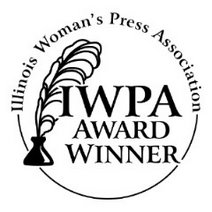
If you haven't shopped for a book on Amazon.com lately, you should take a look. I am continually being amazed by the new features I find there. It's taken me a long time to discover the many things an author or publisher can do to promote a book and communicate with potential readers. Of course there are bare-bones publishers' listings on Amazon too, but I've had a lot of fun trying out the features, both old and new.
Of course I have a profile page with a picture and probably more facts than anyone wants to know about me. I have a "Listmania" list: "Inspiring and Interesting Books for Senior Citizens." I have forty-plus tags, from "aging" to "writing as therapy," to help readers looking for certain book categories, and I've added customer tags to other authors' books, too. I have a growing list of search suggestions in the "books for seniors" category. There are three customer reviews of my book (averaging 4 1/2 stars). I have written customer reviews for a few other books. I have references to this blog and to other web sites that mention my book,
Reinventing Myself: Memoirs of a Retired Professor. All this is interesting--and free--but it's the newer features that really amaze me.
The "Search Inside" feature leads the way to the rest. With "Search Inside," the potential buyer can see large views of the front and back covers, the copyright page, the table of contents, and several excerpts. How do book listings get these features? Some publishers submit their books for "Search Inside," but authors can do so too. The only cost is a copy of the book, sent to a special address after Amazon has verified that you are, indeed, the author, with rights to the book. If the publisher retains the rights, it's up to him or her.
Just a day or so ago, I discovered four new additions to my Amazon listing: Condordance, Text Stats, SIPs, and CAPs. Perhaps only English teachers find such things fascinating, but at the very least, they show the power of computers. Concordance lists the one hundred most commonly-used words in the book, excluding the common "a," "an," "and," "the," and similar short words. The words are printed in sizes representing their prominence in the book. For my book, the largest is "time" (119 times), followed by "years" (99) and "remember" (98). That seems predictable for a memoir. By putting the mouse pointer over the word, one can find out how many times it was used, and by clicking on the word, one can see the page numbers and parts of the sentences in which the word appears! For example, "time" first appears on page three: "Having unusually well-educated parents for that time and place . . ." Why would anyone need to know this? For a book like mine, it's unlikely that anyone would care, but for a more scholarly book, the concordance could provide an easy way for a student or a writer to find relevant references. It's a new world out there.
Text Stats reveals information about readability, complexity, and number of characters, words, and sentences. It shows the book's standing on the Fog Index (11.8), the Flesch readability scale (56.3), and the Flesch Kincaid scale (9.8). My book is apparently about average in readability, as intended. These stats might be important for English or reading teachers checking on fiction or non-fiction books appropriate for their students.
Finally, what in the world are SIPs and CAPs? SIPs are "statistically improbable phrases." In my book, there is just one listed: "cat sitter." I wonder why that's so improbable? There are a lot of cat owners out there, and who takes care of our cats while we're out of town? CAPs are "capitalized phrases." Twenty-five are listed for my book, from "Old Town Pump" (my late husband's old place of business) to "St. Olaf College" (my late father's alma mater and the main location of my brother's teaching career).
Clicking on a CAP leads to information on what other listed books, if any, include that phrase. The "Signature Room" (one of my favorite Chicago restaurants) has two references in my book and three in
Lonely Planet Chicago, by Chris Baty. "Wells Street" has five references in my book, and is also mentioned in at least twenty-two other books about Chicago. Clicking on a CAP also leads to a link to
A9.com, where I found that most references to "Old Town Pump" refer to actual water pumps across the country, but number twenty-three is a quote from my book and a link to me!
I am fascinated and amazed by these features on Amazon.com, but it's too early to judge their effectiveness. I'm sure that the academic world, of which I am no longer a part, will let us know. My book's unimpressive Amazon sales ranking doesn't suggest any effect so far--but did you know that, according to Amazon's Fun Stats, my book offers 2,290 words per dollar (when sold at list price)? At the holiday discount price, you get 3,366 words per dollar!
Copyright 2006 by Marlys Marshall Styne





















